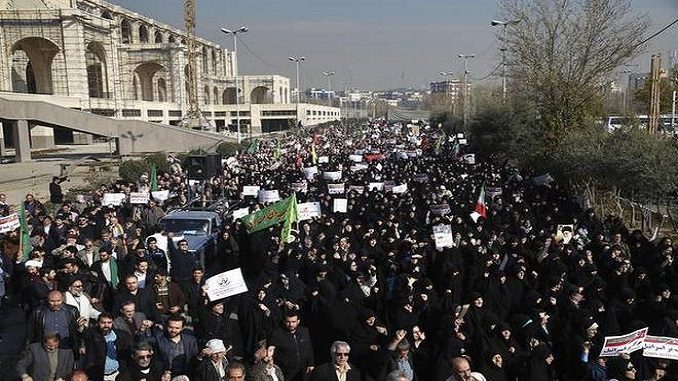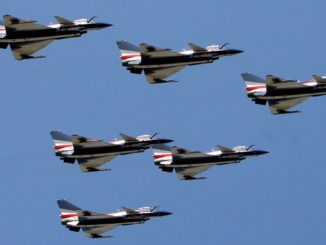
Iranians took to the streets, as anti-government protests spread to ten major cities – the biggest challenge to Iran’s authorities since January’s nationwide demonstrations, Voice of America reported.
Thursday’s street protests took place in Tehran, and nine other cities: Ahvaz, Hamedan, Isfahan, Karaj, Kermanshah, Mashhad, Shiraz, Urmia and Varamin. Citizen journalists reported that Iranian security forces tried to break up the demonstrations with tear gas and by beating and arresting protesters.
The country’s currency slump to record lows against the dollar in unofficial trading at the beginning of the week inflamed many Iranians’ frustrations with economic problems such as inflation and lack of job opportunities.
Protesters of recent days have chanted slogans explicitly calling for an end to the rule of Iran’s Islamist clerics, who took power in a 1979 revolution. Less explicit slogans were chanted during a wave of nationwide protests that erupted in dozens of Iranian cities from late December to early January. That earlier wave of anti-government demonstrations was the most serious that Iran had seen in years.
VOA adds that Iranian state-run media acknowledged but tried to downplay Thursday’s protests, saying that scattered protests occurred in several cities, which were dispersed by police forces early in the evening.
As protests are shaking up the country, Tehran began a major naval exercise near the Strait of Hormuz on Thursday, in an apparent response to rhetoric from U.S. President Donald Trump, Wall Street Journal reported.
On Thursday, the U.S. saw boats going in and out of port, a defense official said. An air component, consisting primarily of unmanned aerial vehicles are also participating in the exercise, a military official added.
The annual exercise appears to have been moved up on the Iranian calendar by several days, reinforcing the view that it is a response to Trump’s recent comments, the Journal writes. Officials in the U.S. military believe that Iran is simply trying to send a message that if Tehran wanted to close the Strait of Hormuz, a critical shipping route that links the Persian Gulf with the Arabian Sea and, ultimately, the Indian Ocean, it could do so.




Be the first to comment